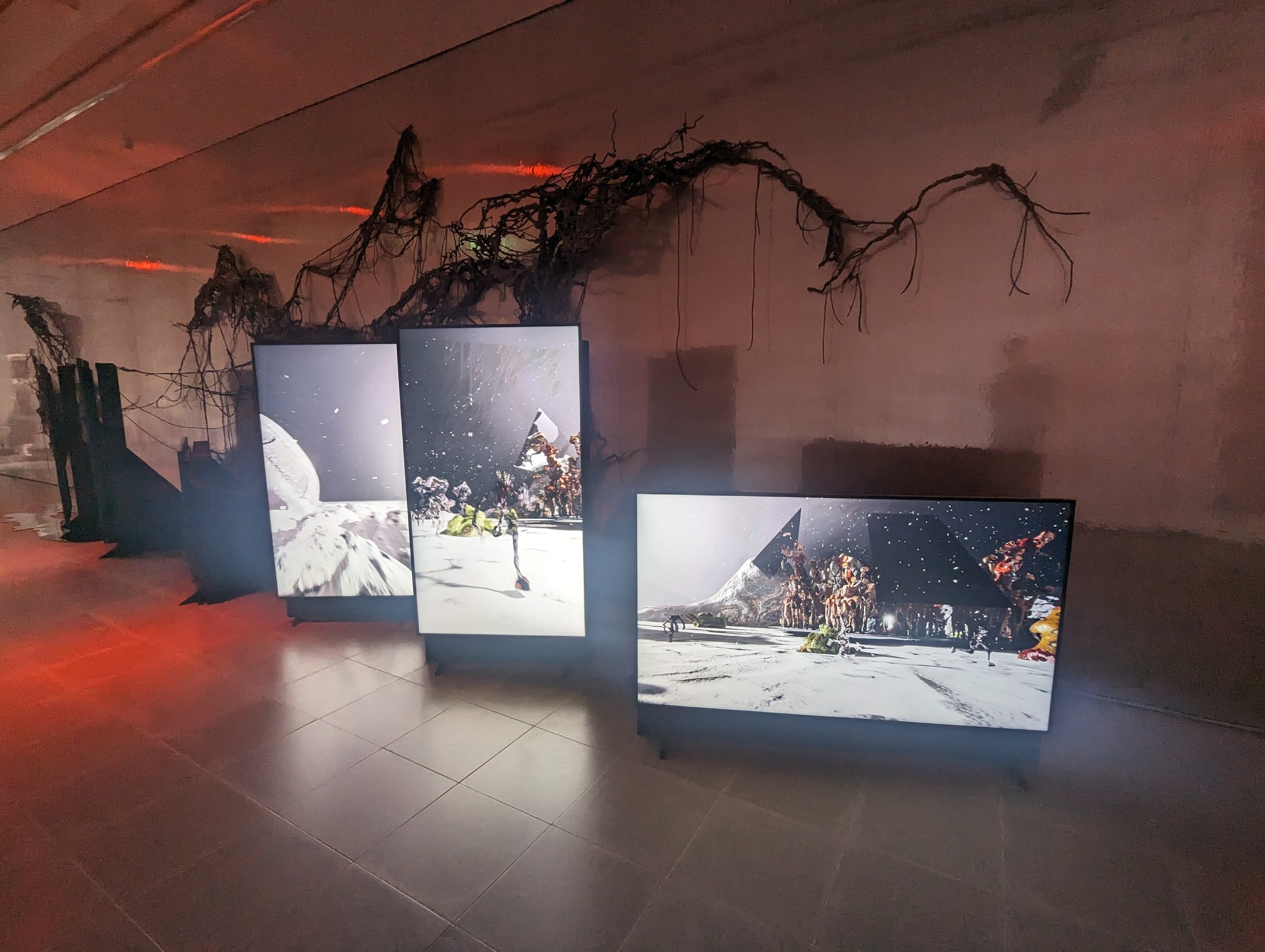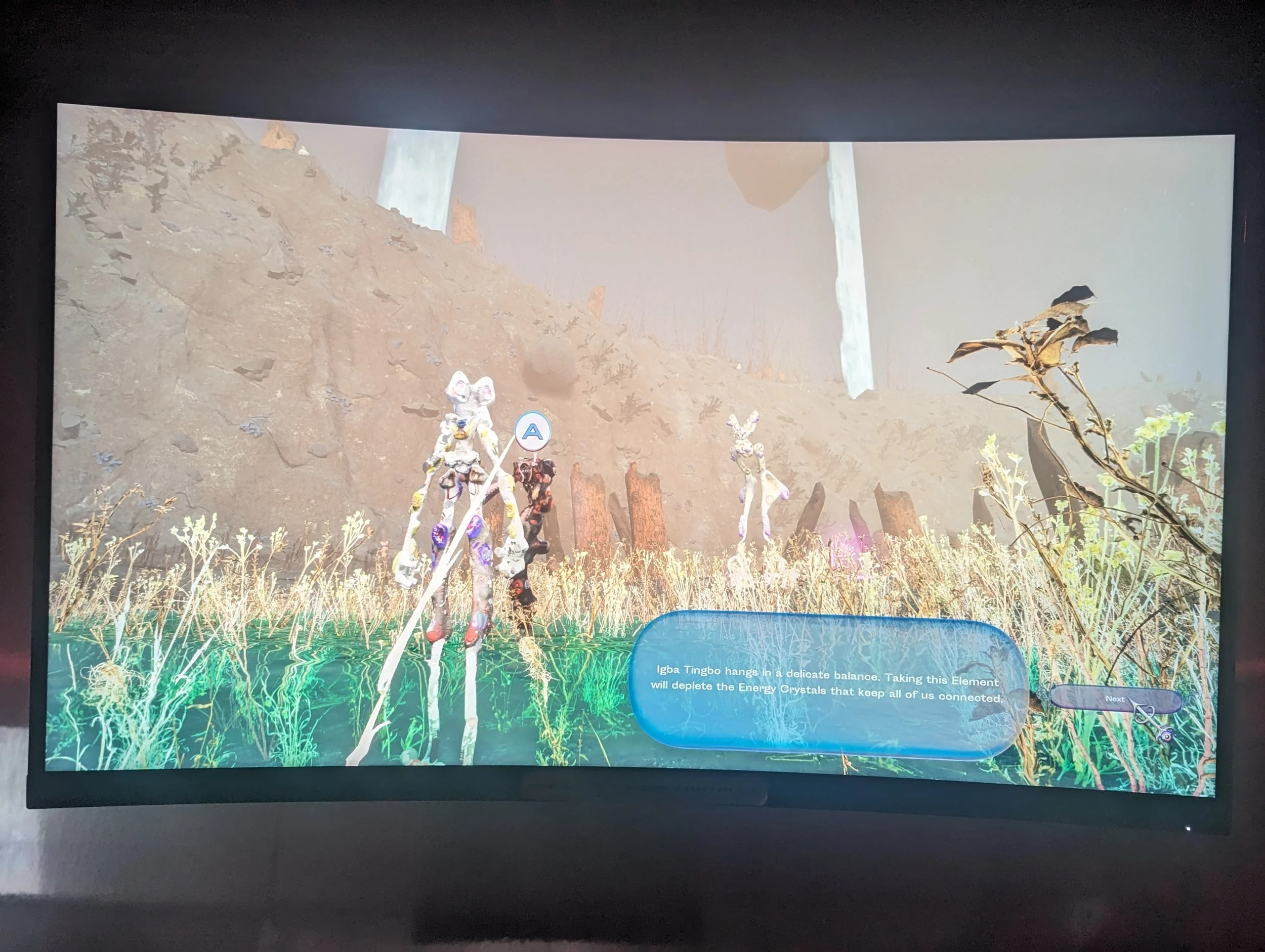Brazilian Artist Gabriel Massan Explores Colonialism With a Web3 Twist on the Tezos Blockchain
The artist uses a video game to teach inclusiveness and to explore his fear for the future

In the middle of Hyde Park and Kensington Gardens lies the Serpentine, an aptly named lake that winds through the two Royal Parks. On either side of the Serpentine Bridge, which marks the boundary between the parks – and technically, if not colloquially, splits the lake into an adjacent body called the Long Water – are the Serpentine Galleries.
At 8 a.m. on a recent wet, gray London morning, I wandered toward Serpentine North, which was hosting a private breakfast for the recently extended Third World: The Bottom Dimension exhibit. Created by Brazilian artist Gabriel Massan and a cadre of collaborators from Brazil, the exhibition is a “journey into a fantastical and thought-provoking world,” structured around a video game that explores “Black Brazilian experience as it intersects with the impacts of colonialism.”
Video games, Serpentine’s Head of Arts Technologies Kay Watson told me, are finally getting their due as a legitimate form of contemporary art. The project reflects Serpentine’s commitment to staying at the vanguard of arts and technology, partnering on Third World with the Tezos Foundation and Trilitech, an adoption hub for the Tezos blockchain.
The video game features a nonfungible token (NFT) component on Tezos, in which players can mint a snapshot of their gameplay, gradually building “a public archive of multiple perspectives and actions,” Massan said.
The prestige of “first world” arts institutions – in a city that displays colonial artifacts it has stolen from around the world – offered a tangible juxtaposition with the colonialist commentary of Massan’s art. That tension helps vitalize Third World’s message, and elevates the video game format as another welcome form of artistic critique.
After buzzing about a group of breakfast goers (and a lifesize mascot of one of the game’s otherworldly beings) Serpentine Galleries Chief Executive Officer, Bettina Korek – as well as Trilitech’s Chief Operating Officer, Robin Maxe and Head of Art, Valérie C. Whitacre – welcomed the group, introducing the project while embracing a general ethos of experimentation. TriliTech likes to say “1+1 =11,” Whitacre said.
The exhibition is the fruit of a yearslong partnership, rooted in a fervent belief in Massan’s vision. The Rio-born, Berlin-based artist was an early creator on the Tezos blockchain, and Massan capped off the morning’s speeches. “In 2021, I could hardly imagine doing this work here,” Massan said. “Thank you very much for changing my life.”
The project reflects Massan’s concerns for the future. In development since 2021, Third World spans a period in which Brazil experienced a massive shift in politics and power, transitioning from far-right president Jair Bolsonaro to the return of center-leftist Luiz Inácio Lula da Silva. The artist’s work is a response to questions about emerging from a state of emergency into Brazil’s “state of re-emergence,” and it nods to historical inequities, both domestic and international.
“I asked myself how can I reveal, rather than replicate, this system of inequality for people who are not living this reality, so that they can really understand how it can suffocate,” Massan said. “How it can change your behavior, intentions and how you navigate and understand your own body, or how to understand that others also need the same amount of energy and care that you do.”
After the speeches, I walked with the artist into the gallery. Upon entering, a collection of screens displayed spindly, peculiar creatures that Massan rendered from free sculpture, using “stream of consciousness” as a guide. A spectral soundscape by vocalist and music producer LYZZA filled the space, and visitors wandered slowly throughout the showroom, taking in various installations.
Massan was intentional about gathering collaborators – Castiel Vitorino Brasileiro, Novíssimo Edgar, Jota Mombaça, Jota Mombaça and LYZZA – inviting them out of admiration for their work, and a belief that their collective Brazilian identity would enable them to wholly “reveal” the system of inequality that people living outside of it might not understand.
In the center of the gallery is a corridor filled with several gaming consoles. I sat down and began to play. During the opening sequence, I was introduced to “The Headquarters,” which had sent my character on a mission to “The Bottom Dimension” in order to extract resources and energy. There are various elements – like energy crystals, required for living beings to stay alive and released by beings that die, and weapons that drain the energy of others – that reflect socioeconomic dynamics of a stratified global society.
The first level is called Igba Tingo (The Forest), a fantastic dimension that represents Castiel’s interest in embodied memory and transmutation. It simulates a “moment of first arrival,” invoking the letter from Pêro Vaz de Caminha to the King of Portugal, Manuel I (1500), an eyewitness account of his “discovery” of Brazil that details an encounter with the region’s indigenous people. Throughout the level, the player is tested on their openness to other cultures and ways of being.
I spent about half an hour exploring this new place, trying to be attentive and caring – a “good” visitor. But as I played, I could never quite shake the last directive the program gave me before I dove into the gameplay: "Close your mind to start.”
Later that afternoon, I flew to Brasilia, Brazil’s capital and center of government. A congressional committee was busy preparing a compte rendu for an inquiry into Brazil’s Trump-like insurrection last January. A few days after I arrived, Senator Eliziane Gama released the 1,333-page report, recommending the indictment of Bolsonaro and dozens of his key supporters, naming the former president as the “intellectual and moral” engineer of the riots.
The committee doesn’t have the power to charge suspects – that lies with the attorney general – but it’s a damning statement on what feels, globally, like a dying gasp of colonial power. Younger generations are trending toward more socialist values, are generally more fluid when it comes to identity politics and care deeply for our environment.
Colonialism is hardly vanquished, but perhaps these artists are writing its dying throes into the fabric of our culture. Video games, now, are not just effective escapes from harsh realities – they can also provide commentary on the worlds you’re turning away from.
“You have arrived in our world,” reads one snippet of the gameplay, a text written by Castiel when the player collects the 'Transmutation/ Death' artifact. “Just as water transforms into clouds through metamorphosis, it's only through transmutation that you will be able to survive here. We call this moment ‘The Good Death’ – the rebirth.”
Death Artefact, Designed by Masako Hirano
To survive, we must transform. But we must also preserve the artifacts of our histories, lest we repeat ourselves. We need “public archive[s] of multiple perspectives,” and imagined parallel worlds from which we can better see our own. “I will keep creating worlds for people who want to uncover and rediscover themselves,” Massan said during their speech. “Thank you to everyone working on opening up this portal to other universes.”


